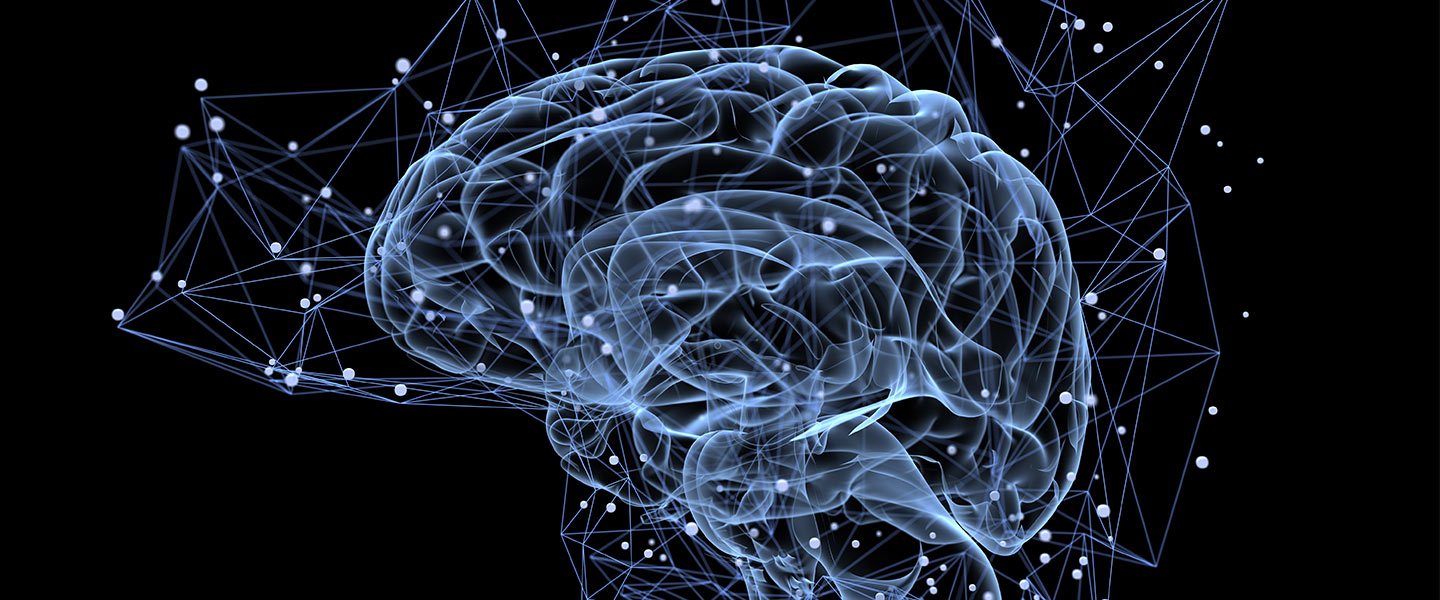The Biology of Emotions
The Biology of Emotions

From The Quarterly, January 2016
Dr. Huda Akil is one of the world’s leading experts on what scientists call the neurobiology of emotions. She and her colleagues are now two decades into an investigation of what goes on in the brain when we experience emotions, with the objective of discovering new ways to target imbalances and biological abnormalities that contribute to depression, anxiety and substance abuse.
A member of the Foundation’s Scientific Council, Dr. Akil co-directs the Molecular & Behavioral Neuroscience Institute at the University of Michigan, where she is a Distinguished University Professor. Born in Syria, she is the daughter of a father who introduced modern concepts of psychology to Arab culture; the sister of a psychiatrist; and mother of a son, Dr. Brendon Omar Watson of Weill Cornell Medical College who received a 2014 Young Investigator Grant to conduct brain research.
The constructive role that emotions play in our lives highlights what Dr. Akil and other scientists call their “adaptive” value. Scientists believe that emotions arose in higher organisms because they helped them survive. Problems with biological systems that regulate the emotions often have precisely the opposite effect: having major depression or chronic, acute anxiety makes daily survival that much more difficult.
“We simply can’t live without emotions,” Dr. Akil emphasizes. “If you experience something positive, you want to remember it in a certain way, perhaps so you can experience it again. The same with things that are negative— you want to remember them so as to avoid them in the future. It’s when you get stuck or disconnected from reality that emotions become a problem.”
Early in her career, Dr. Akil and colleagues discovered that endorphins, naturally occurring opioids in the human system, including the brain, are activated by stress and can relieve pain. Following this discovery, Dr. Akil gravitated to an even larger research question: whether, or how, individual temperament affects mood disorders.
“We all know from looking at people and how they react and suffer, that people are really different,” she says. “We were especially interested [in this subject] because many genetic studies in psychiatric disorders hinted that temperament is really important, especially in determining who is prone to develop depression or anxiety disorders, or to become a substance abuser.”
“I felt we didn’t have a good way of studying differences in temperament in the lab,” she says. That led Dr. Akil’s team to develop rodent models of two fundamental behavioral types that she suspected—correctly—had much to do with individual susceptibility to depression, anxiety and substance abuse. Genetically distinct rat lines were bred by Dr. Akil and her colleagues to be either “high reactivity” (HR) or “low reactivity” (LR). HR lab rats tend to be explorers of their space and are interested in social interactions with cage-mates. LR rats tend to find a corner and remain there, eschewing interaction with others. The team continued the breeding until they emerged with animals that reliably displayed one tendency or the other, in an extreme form. One thing this showed was that “this trait is very genetic—it breeds true,” Dr. Akil says. “One set is very adventuresome and the other is very inhibited.”
This became a solid platform for probing how animals with these two exaggerated temperaments differed from normal animals and from one another. Dr. Akil looked for differences in the way their genes were expressed, and in how the proteins they encode vary and influence emotional behavior in a range of tests. High-reactivity animals tended to be resilient to stress, resistant to depression, but at the same time were notable risk-takers and explorers. HR rats were inclined to experiment with cocaine when the drug was made available to them. It was the reverse with the “low-reactivity” animals. The LR rates tended to be prone to depression and anxiety; did not react well to stress; tended to isolate themselves; and were not especially interested in experimenting with drugs or very much else in their environment.
The accompanying story (Message of Hope: There Are Many Places To Attack Depression) discusses some of the key molecules Dr. Akil discovered to be correlated with these models of temperament and emotion. Those findings were based partly on research with the rodent models. But they also derive in part from another major thrust of her research: postmortem investigations of the brains of people who suffered major depression and bipolar illness. Dr. Akil leads one of six groups in the international Pritzker Neuropsychiatric Research Consortium, which has assembled a collection of these very valuable brains, donated by families of deceased patients.
This work, “for which we owe so much to the families, has taught us a great deal,” Dr. Akil says. “It has reframed my entire thinking about depression.” The postmortem brains “enabled us to see a summary of everything that happened in that entire life” in terms of the brain—how the person’s unique genetic inheritance played out, how the brain developed, the effects of aging and gender, and of course the effect of the illness on the brain.
The striking revelation: “When you look at the brains of chronically, severely depressed people, you realize it’s a whole-brain change. Almost every part of the brain is altered and touched by the illness. There is evidence of pervasive changes, in the number of genes that are affected, the number of brain regions affected,” Dr. Akil says.
Among the lessons Dr. Akil has learned from this is the importance of treating depression as early in life as possible, ideally when it first appears. Looking at the postmortem brains of people who were depressed for many years “makes you appreciate why depression can become ‘treatment-resistant,’” she says.
It’s as if the long-depressed brain is in a deep slumber, a kind of perpetual winter. “We need to get people rapidly out of their negative mood and deep depression early—and use every means available, whether fast-acting antidepressants, psychotherapy, physical activity, better eating, social support— to actively re-engage all the affected brain circuits,” she says. “Because by the time you have had multiple episodes and the person has become isolated, living in a socially stressful or impoverished state, is inactive, not sleeping or eating right…the brain does not look any longer like a normal brain. It will take so much more work to reverse that.”
Message of Hope: There Are Many Places To Attack Depression
About 10 years ago, Dr. Huda Akil and her colleagues in the Pritzker Consortium began scrutinizing the brains of deceased people who had suffered depression, using increasingly sensitive and powerful tools to measure gene activity in multiple brain regions. To their surprise, one set of molecules, called the FGF family, kept topping the lists they made of most-altered factors in these brains. FGF stands for fibroblast growth factor—one of various kinds of molecules that serve to stimulate and sometimes regulate the growth and activity of nerve cells in the brain.
FGFs were at first thought to play their main role early in the brain’s development. Dr. Akil’s team discovered that FGFs also played a role over the lifespan, helping to regulate emotions, specifically, on a moment-to-moment basis and over the long haul. “In rats, we can manipulate the FGF system and within minutes see a change in anxiety behavior,” she says. This makes certain members of the family—notably FGF2, levels of which decline in depression—targets for next-generation drugs.
The discovery that FGFs play two roles—helping to wire the brain and then, later, to help regulate and “bias” the emotions (for instance, to incline an individual to be more or less resilient to the impact of stress)—makes them even more attractive targets. Dr. Akil’s team has recently noted that FGFs are “interaction partners” with the “neurotransmitter systems we all know,” like serotonin, which is the target of SSRI antidepressants such as Prozac or Lexapro.
Dr. Akil noted, “We’ve shown that FGFs are important, but there are multiple players in multiple parts of the brain, acting in different registers at different times. We like FGFs because they have a wide playing field—lots of interacting molecular partners, at different times in life and throughout life. This makes them very attractive in our efforts to address some of those key changes that affect the whole brain in a disease like depression. Ours is a message of hope: there are a lot of places to attack depression and other emotional disorders, we have lots of options, lots of strategies we want to deploy. These will take time to test, but we will deploy them.”



